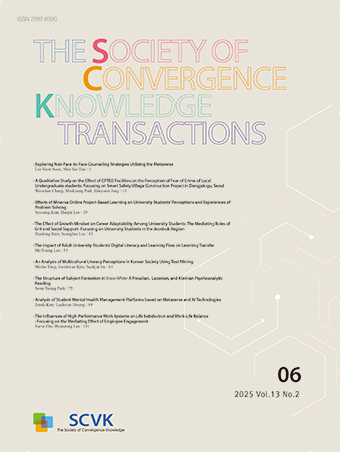Research Article
Abstract
References
Information
모바일 클라우드 스토리지 서비스는 다수의 이동 장치에 걸쳐 사용자의 멀티미디어 콘텐츠 데이터를 효율적으로 공유 또는 동기화에 사용된다. 이 모바일 클라우드 스토리지는 다양한 콘텐츠 데이터를 저장하기에 여러 가지 이질성을 해결하는 유연성 및 확장성을 제공하여 공유 과정에서 반드시 보안 문제를 처리해야 한다. 현재 일반적으로 클라우드 스토리지 서비스는 보안 목적을 위해 콘텐츠 데이터를 암호화하여 이용한다. 하지만, 이 방법은 소프트웨어에 의한 단순 ID, 비밀번호와 암호화 키를 관리하는 방법으로 불량 사용자를 식별하기 때문에 안전하지는 않다. 본 논문은 모바일 클라우드 스토리지 상의 EMRA(Extended MetaData Registry Access) 기반의 멀티미디어 콘텐츠 공유 및 보안을 위한 데이터 접근 관리 모델과 기법을 제시한다. 이는 하드웨어 기반의 키 관리, 클라이언트 소프트웨어 무결성에 대한 증명 및 보안 키 공유를 지원한다. 또한 제시한 모델은 각각 서로 다른 형태의 멀티미디어 콘텐츠들을 저장/관리하고 있어 검색 시 발생하는 문제를 EMRA 기반의 메타데이터 관계성을 구축하여 검색에 신뢰성을 높인다. 그리고 본 논문은 ARM TrustZone과 TrustZone 환경의 보안 세계에서 실행되는 TPM 에뮬레이터를 사용하여 프로토타입을 제시한다.
Mobile cloud storage services are used to efficiently share or synchronize users’ multimedia content data across multiple mobile devices. This mobile cloud storage provides flexibility and scalability to solve various heterogeneities to store various content data, so security issues must be addressed in the sharing process. Currently, cloud storage services generally encrypt and use content data for security purposes. However, this method is not secure because it identifies rogue users by managing simple IDs, passwords and encryption keys by software. This paper presents a data access management model and technique for sharing and security of multimedia contents based on EMRA on mobile cloud storage. It supports hardware-based key management, proof of client software integrity, and secure key sharing. In addition, the proposed model stores/manages different types of multimedia contents, so that problems arising during search can be solved by establishing a metadata relationship based on EMRA to increase the reliability of the search. And this paper presents a prototype using ARM TrustZone and a TPM emulator running in the secure world of TrustZone environment.
- Cui, Yong, Zeqi Lai, and Ningwei Dai. "A first look at mobile cloud storage services: architecture, experimentation, and challenges." IEEE Network 30.4 (2016): 16-21.https://doi.org/10.1109/MNET.2016.7513859
- Wan, Shengye, et al. "RusTEE: Developing Memory-Safe ARM TrustZone Applications." Annual Computer Security Applications Conference. 2020.https://doi.org/10.1145/3427228.3427262PMCid:PMC7576709
- Nicholas, Geraldine Shirley, Yutian Gui, and Fareena Saqib. "A Survey and Analysis on SoC Platform Security in ARM, Intel and RISC-V Architecture." 2020 IEEE 63rd International Midwest Symposium on Circuits and Systems (MWSCAS). IEEE, 2020.https://doi.org/10.1109/MWSCAS48704.2020.9184573
- Wesemeyer, Stephan, et al. "Formal Analysis and Implementation of a TPM 2.0-based Direct Anonymous Attestation Scheme." Proceedings of the 15th ACM Asia Conference on Computer and Communications Security. 2020.https://doi.org/10.1145/3320269.3372197
- Lee, Jong-Sub, and Seok-Jae Moon. "Business Collaborative System Based on Social Network Using MOXMDR-DAI+." International Journal of Advanced Culture Technology 8.3 (2020): 223-230.
- https://www.itu.int/en/ITU-T/studygroups/2017-2020/17/
- Chandra, Angelia. "Measurement of the Cloud Security Level at Company using Cloud Control Matrix."
- https://www.kisa.or.kr/
- https://www.iso.org/standard/68766.html/
- McLaurin, Teresa, Frank Frederick, and Rich Slobodnik. "The DFT challenges and solutions for the ARM® Cortex™-A15 Microprocessor." 2012 IEEE International Test Conference. IEEE, 2012.https://doi.org/10.1109/TEST.2012.6401534
- Publisher :The Society of Convergence Knowledge
- Publisher(Ko) :융복합지식학회
- Journal Title :The Society of Convergence Knowledge Transactions
- Journal Title(Ko) :융복합지식학회논문지
- Volume : 8
- No :4
- Pages :49-57
- DOI :https://doi.org/10.22716/sckt.2020.8.4.035




 The Society of Convergence Knowledge Transactions
The Society of Convergence Knowledge Transactions







